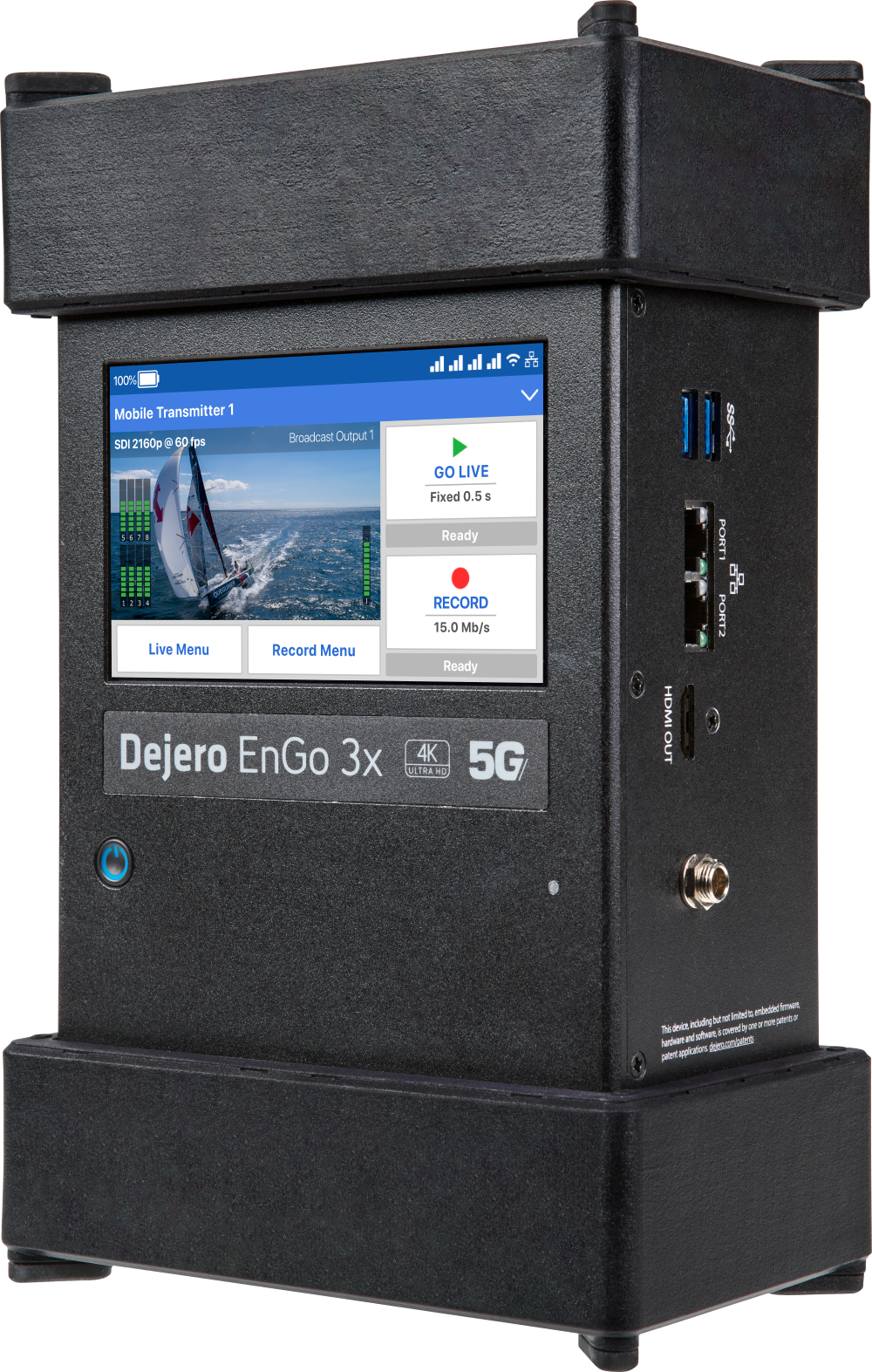
Dejero plans to highlight the latest version of its patented Smart Blending Technology in live demonstrations at its booth at the 2024 IBC Show, Sept. 13-17.
Built into its EnGo 3x 5G mobile video transmitter with GateWay mode and its new GateWay 3220 network aggregation device (both showcasing at IBC), Dejero’s Smart Blending Technology simultaneously blends together multiple wired (broadband, fiber) and wireless (3G/4G/5G & satellite) IP connections from multiple providers to form a virtual Dejero “network of networks,” the company said.
Dejero says its new improved algorithm renders the connection even more stable, in all latency settings, so that users can now transmit high-quality live video with glass-to-glass latency as low as 0.5 seconds over bonded cellular. This gives remote broadcast and production teams uninterrupted access to stable, reliable internet from anywhere, according to the company.
The EnGo 3x native 5G mobile video transmitter with multicam and GateWay mode is a two-in-one device that leverages network aggregation technology to provide news and production teams with access to stable, reliable internet from anywhere, Dejero said. Using EnGo 3x with GateWay Mode, remote crews can broadcast breaking news, quickly transfer files to prepare and upload packages while in the field, and set up high-bandwidth access points for multiple devices.
This wireless broadband internet connectivity increases capacity for data-intensive applications such as newsroom systems or editing tools; creates broader coverage areas; and enhances reliability through connection diversity, according to the company. It also supports virtual private network (VPN) tunneling for secure access to an organization’s networks, alleviating increasing concerns about data protection.
“In these times of mass news and media consumption on social media and news websites, speed is as important as accuracy in journalism,” explains Matt Scully, director of product management, Dejero. “Establishing an ultra-reliable connection path between the studio and field to streamline communications, hit tight deadlines, and boost productivity is vital.”
Its large touchscreen with simple interface and new wired remote, field operators can easily start and stop, live, and monitor battery status, Dejero said. Crews can use Dejero Control cloud-based management system to remotely control EnGo units, preview incoming feeds and distribute content from anywhere.
The ruggedized EnGo 3x transmits up to four fully frame-synced HD feeds from a single unit, so users can create dynamic productions at a fraction of the cost, according to the company.
Making its IBC debut, the new GateWay 3220 is a resilient and compact network aggregation device powered by Dell Technologies, which also integrates Dejero Smart Blending Technology. Specifically designed and engineered to deliver optimal blended connectivity at the far edge of a network, the ruggedized and fanless chassis is ideal for installation in vehicles and portable kits to obtain resilient connectivity to the internet, cloud applications, and private networks, Dejero said. The compact form factor of the GateWay 3220 means that field crews can stay connected while capturing dynamic or nomadic shots, when space is limited and when cellular connectivity isn’t readily available or able to support the bandwidth required for large data/file transfers.
“Access to reliable, resilient internet in the field is essential—whether you’re looking to produce more news stories for your traditional and digital platforms, access newsroom systems, do additional research for a story, or remotely send in edited packages,” Scully adds.
IBC will also see Dejero’s new Linux-based virtual WayPoint receiver. Designed to serve as the foundation for all Cloud base IP formats, it currently supports RTMP and RTMPS formats, imminently followed by support for NDI and SRT.
“We know that it’s important for our customers to be able to deliver video and data directly into the cloud in a format that is flexible,” says Scully. “Whether that is SRT, NDI or the next standard, it’s so important to be interoperable in order to deliver effectively to downstream applications.”
The planned NDI output will allow multiple video/audio streams on a shared connection, which directly speaks to workflows that will revolve around network-based distribution methods, Dejero said. NDI enables high-quality, low-latency, frame-accurate video and allows broadcasters to track a specific IP stream to a specific application.
Dejero will be in Hall 2, Stand B09.







